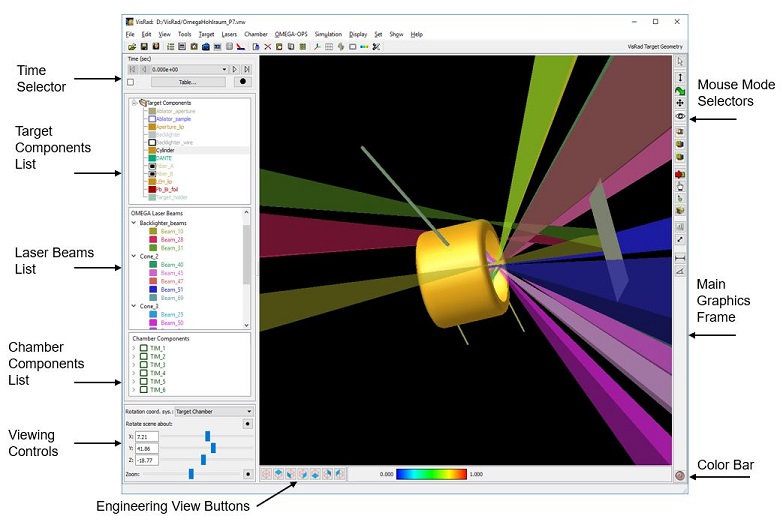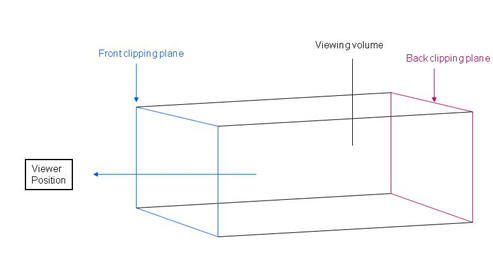

| CONTENTS | GLOSSARY | SUBJECT INDEX | SEARCH DOCUMENTATION |
The Main Graphics Frame is the primary graphics area in the VISRAD Main Window. It is used to view the target components while setting up the grid, as well as to display results from the VISRAD calculations.
To adjust the view in the main graphics window, use the Graphics Viewing Controls.

The Main Graphics Window is displayed using Orthographic Projection. In orthographic projection, the viewing volume is a rectangular parallelepiped (box). The cross section of the viewing volume does not change with depth (unlike "perspective" projection), and therefore projected distances and angles are not affected by their depth in the viewing volume.

Several items can be used to enhance the display or measure angles and distances:
| Copyright © 2000-2025 Prism Computational Sciences, Inc. | VISRAD 21.0.0 |